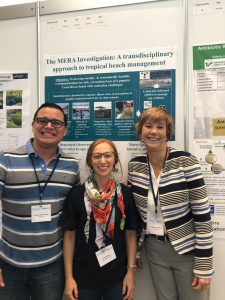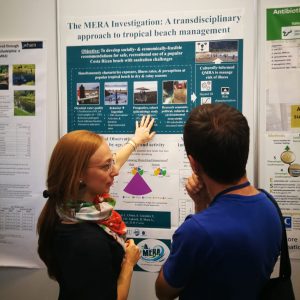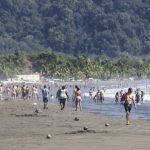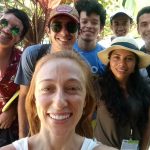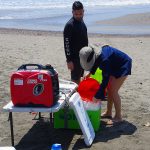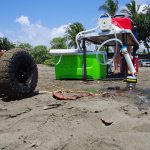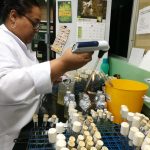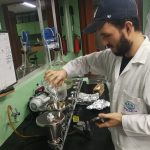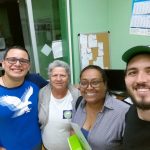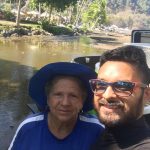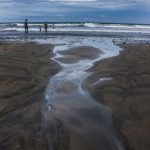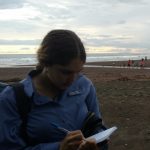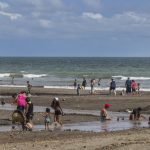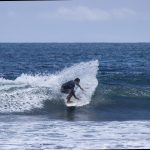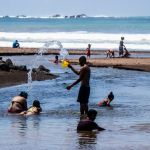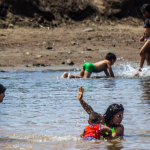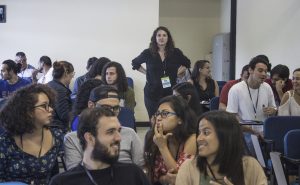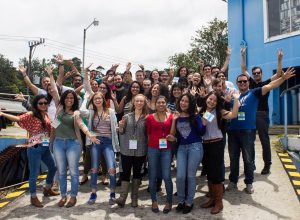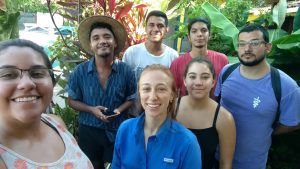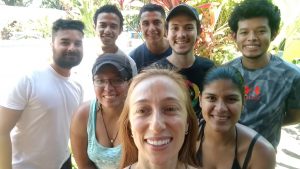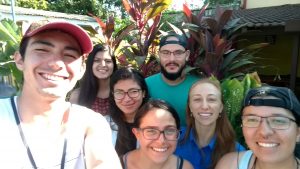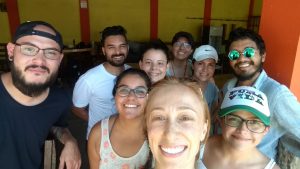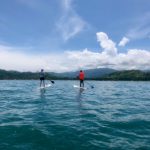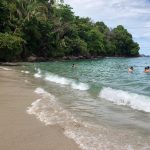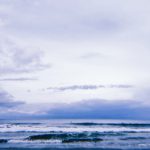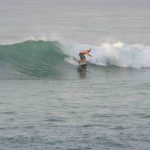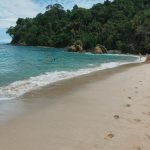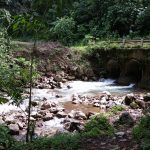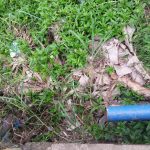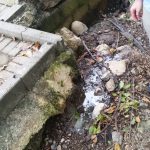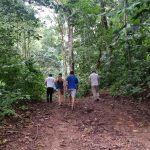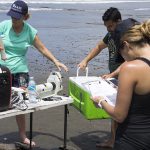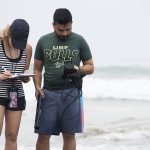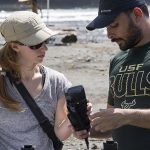Investigation MERA at the 2019 IWA Health-Related Water Microbiology conference
By Erin Symonds
Since data collection ended last April, we have been busy processing and analyzing all of the information that we gathered. Even though we are still in the process of analyzing the data, I enjoyed presenting a scientific poster with preliminary results and pop talk (see below) about the MERA Investigation at the International Water Association’s Health-Related Water Microbiology sub-group biannual meeting in Vienna, Austria.
Data collection is a success in 2018 and 2019!
By Erin Symonds
Over the course of the past year, MERA investigators and research assistants executed simultaneous water quality, epidemiological, and ethnographic studies at a popular beach along the Pacific coast of Costa Rica in order to collect the information necessary to better understand coastal recreation, safe swimming conditions, and how to best manage the beach from a public health perspective. During a total of 26 weekends, all collaborating MERA institutions worked together with 33 Costa Rican undergraduate students to collect all the data needed. Each weekend, a team of approximately 14 people worked together to initiate epidemiological surveys with over 5,000 beachgoers, collect over 150 coastal water samples, and execute over 500 behavioral observations on the beach, and conduct semi-structured interviews with more than 80 stakeholders, including health practitioners, national and international beachgoers, and local tourism employees.
The Costa Rican National Water Laboratory and Team USF led and executed the water sample collection and all MERA laboratories contributed analyses to characterize the water quality during the course of the study. Team USF and the Costa Rican National Water Laboratory dedicated their weekends to making this study a success. Above, they are analyzing water samples for fecal indicator bacteria to characterize the coastal water conditions. Despite working long hours during the weekends, both Javier Gallard and Adriana Gonzalez (USF graduate students) enjoyed the opportunity to collaborate with researchers from different institutions and disciplines.
“What I have cherished the most out of this experience is to work with other scientists, students and professionals from different areas to gather information about water quality and beachgoer activities and experiences,” explained Adriana. Both Adriana and Javier also enjoyed the challenge of collecting water samples at a beach with big waves. Javier noted, “I had a lot of fun troubleshooting technical difficulties as they inevitably happened”.
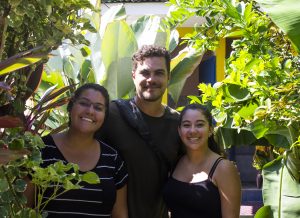
Simultaneously, Team SMU, with the help of two University of Costa Rican undergraduate research assistants, conducted structured observations of recreational water activities and semi-structured interviews with local residents, beach employees (such as surf instructors and lifeguards), national and international tourists, and health professionals. When asked about his fieldwork experiences during this study, Dr. Gordon Ulmer, SMU postdoctoral researcher, exclaimed, “The ethnographic fieldwork was personally rewarding because we learned about many environmental and public health problems directly from the people working on the frontlines of these issues, and we know the work we are doing will help shape a better future for all in the community”.
While the entire MERA team conducted epidemiological surveys on the beach, a group of over thirty Costa Rican University undergraduate students from various disciplines executed the large majority of the surveys with beachgoers. Dr. Erin Symonds, MERA coordinator and USF postdoctoral research, noted, “We were able to achieve our goal of initiating over 5,000 epidemiological surveys with beachgoers thanks to the dedication, hard work, and enthusiasm of the Costa Rican undergraduate students that worked with us as research assistants. I am very pleased with the work that we were able to achieve as a team and it was rewarding to have enabled our research assistants to grow as professionals”. Below, the team is celebrating the initiation of over 5,000 epidemiological surveys on the beach.
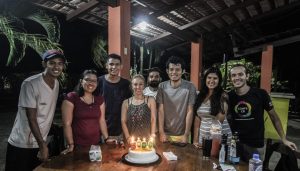
All of the Costa Rican undergraduate student research assistants received 24 hours of training as well as the opportunity to put into practice what they had learned. Joselyn Piedra, University of Costa Rica Sociology student, explained, “To work with the MERA Investigation was a great learning opportunity, from an environmental as well as social perspective. I thoroughly enjoyed the process. I got to know wonderful people and I felt part of this team. To survey people on the beach was an enjoyable experience and an important learning opportunity for my career”.
Another student research assistant, Karina Angulo, from the National University of Costa Rica, described her experience as enriching. “My experience with the MERA Investigation was very enriching. I learned a lot about the many ways that we, Costa Ricans, recreate on the beach. It made me reconsider the importance of natural resource management and protection, as well as how our actions from our homes impact marine and coastal resources”. Student research assistants, like Héctor Hernández from the Costa Rica Institute of Technology, also described their experience as rewarding, “To participate in an investigation as important as MERA filled me with a lot of satisfaction and pride. Every day that I collected data, I learned something new – on the beach as well as with my teammates. It was really an enriching experience to be surrounded by people that love what they do.”
Follow-up epidemiological surveys were initiated with all epidemiological survey participants via email or text message a week after they visited the beach. MERA researchers were pleasantly surprised by the high participation rates achieved during the study. “Response rates in this study were much higher than those that I had anticipated given my experience working with communities. I attribute this to the Costa Rican population’s willingness to voluntarily participate in this important research. We are thankful for all participants’ time and enthusiasm,” explained Dr. Maryann Cairns, SMU Anthropology professor and lead project investigator. During the next year, data from the water quality, epidemiological, and ethnographic studies will be used to inform exploratory quantitative microbial risk assessments (QMRA) and will allow MERA researchers to understand how coastal recreation affects beachgoer health and identify management recommendations to promote safe beach recreation.
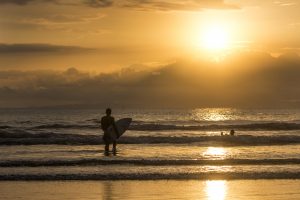
Behavioral Observations: An Anthropology Graduate Student’s Perspective on Building Creative Tools for Gathering Data in June, July, and August 2018
By Megan Brown
Think about the last time you went to the beach.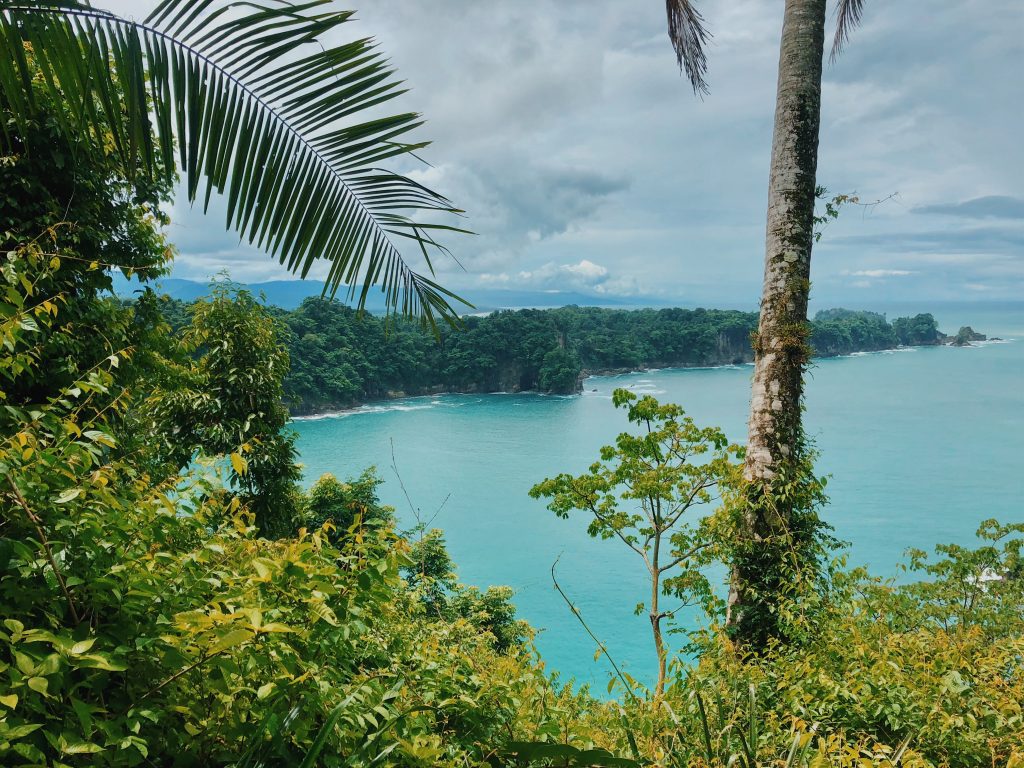 What was the weather like? Did you swim? How long were you in the water? How many times did your head go under water?
What was the weather like? Did you swim? How long were you in the water? How many times did your head go under water?
Chances are, you remember if you played in the waves or if you surfed, but you might not remember exactly how many minutes you were in the water, or how many times you went underwater. But these details are important for the MERA Investigation because they give us critical information about what people’s experiences swimming at the beach are actually like. In order to build an accurate model for understanding risk, we first need accurate data on what peoples’ exposures entail.
That’s why I spent part of my summer helping our team of anthropologists to develop and pilot our behavioral observation tool, which we use to capture these critical details about peoples’ experiences at the beach. These structured observation periods help us to understand what people do at different parts of the beach at different times. For example, it’s possible the experiences of men and women, locals and tourists, or waders and surfers might differ in important ways. Maybe fewer people swim immediately after storms, or on Tuesday mornings, than on sunny Saturday afternoons. The more detail we are able to capture, the more accurate our risk assessment model can be.
These observations can be done with just paper, a pencil, and a watch, but we use technology to make the data easier to collect and analyze. An Open Data Kit survey helps us to collate the length of the swim event, GPS points, and other data about a person’s swimming experience. This improves the accuracy of the data and the speed with which the data can be analyzed. We also used Livescribe pens to help us capture audio recordings and transcribe our notes in real time. Sometimes, a set of binoculars help us keep our eyes on a swimmer, especially if that person is surfing or boogie boarding far from the shore. In piloting the tool, we wanted to discover what technology and strategies worked well for our team, and what approaches we needed to rethink and modify before we moved into the large-scale observational study period.
Flexibility and creativity are essential components of an effective pilot, because unexpected events, things going wrong, and even things simply not going as efficiently as possibly provide important opportunities for learning and improving. For example, the pens don’t always transcribe our messy handwriting perfectly, and sometimes juggling several pieces of technology can get complicated. But at the end of the day, having a pilot period offered us as researchers a chance to improve the quality of data we collect and maximize the efficacy of our study.
Health and beach recreation: Preparing to understand them better in June and July 2018
By Erin Symonds
It is always important to pilot a survey prior to executing it full-scale. We executed the pilot epidemiology study in June 2018 as a team, which was comprised of MERA scientists, collaborators from the Costa Rican National Water Lab, Costa Rican University students, and USF students. Many thanks to the willing beach goers who participated in the survey!

In preparation for the full-scale epidemiology study at the beach, a total of 23 Costa Rican University students and several collaborators at the Costa Rican National Water Laboratory were trained to execute the epidemiology beach survey in July 2018.

Sun, surf, and sampling: A 5-minute glimpse into water quality sampling at a high wave action beach in Costa Rica March 2018
By Adriana González and Javier Gallard
We just got back from our second expedition to Costa Rica, to collect microbial water quality samples and data in the dry season. Thanks to photographer and videographer Carlos Fernández Arce at Tormenta Cerebral Comunicación, we are excited to share one of our 6-hr sampling days with you in this awesome 5-minute video.
Rain, surf, and sampling: USF graduate students reflect on their first water quality sampling trip in Costa Rica October 2017
By Adriana González and Javier Gallard
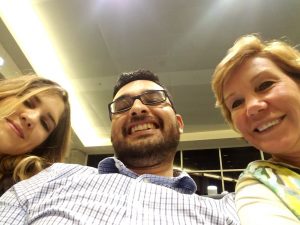
Our first sampling trip to Costa Rica represented a homecoming to us – Adriana and Javier- and Dr. Harwood’s first trip ever into the country. Our goals during this trip were to (1) get to know our Costa Rican collaborators, (2) get to know the study site and possible fecal pollution sources affecting it and, (3) determine the beach water quality during the rainy season. This first sampling trip is the first of several trips, where we will collect some of the data needed to determine water-related health risks. Ultimately, these data will be combined with ethnographic data and observations on human behavior and perceptions so that we can recommend improved water quality management options.

Everyone was excited and understandably nervous to get started on the right foot. Since this project is a joint effort between different United States and Costa Rican institutions, we kicked off our first day at the AyA National Water Laboratory in Tres Ríos– a chance for all of us to finally meet face-to-face and tour the laboratory.
Our trip consisted of two weeks at the beach, collecting coastal water samples under a variety of conditions. In comparison to Tampa, Florida, USA, the weather is a little different in Costa Rica, because it is located in a tropical zone. In Costa Rica, there are no discrete seasons as one would find in parts of the United States. For example, during what some in the United States would consider the fall, October is one of the last months of the rainy season (or winter) in Costa Rica. It rains quite a bit in Costa Rica (an average of ten inches for October as compared to just two in Tampa), so determining how such a large amount of rainfall affects coastal water quality is important.
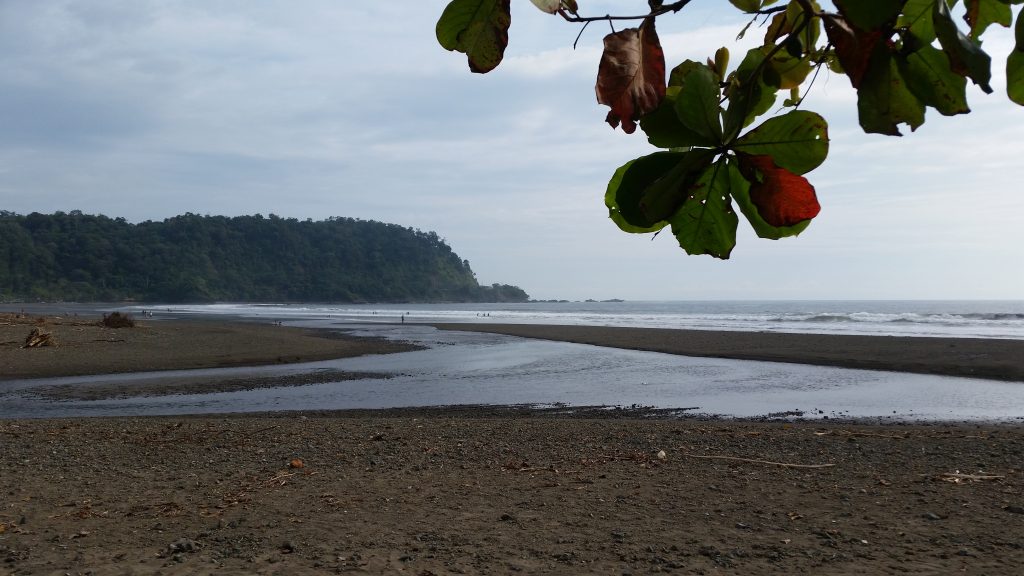
During the first few days on site, our Costa Rican National Water Laboratory collaborators showed us the ins and outs of the watershed and possible sources of pollution. We explored the city, beach, and even the head waters of the main river flowing through town, which took us on an amazing walk through rainforest. In turn, our team had the opportunity to share our water sampling protocol with the national laboratory team.
We are using what is called ultra-hollow fiber filtration, which is basically a quick way to capture all the microbes found in large amounts of water. Our setup is pictured below: tubing to transport the water, a peristaltic pump to push water through the filter, and a generator to power the pump.

Thankfully, it rained mostly at night, so that we could collect all 36 samples without risking our not-so waterproof equipment.
We are now busy at work in the lab, using different laboratory techniques to find out what type of wastewater-associated microbes and indicators, if any, were actually in the water. We will return to Costa Rica in March, where we will analyze the water quality again, except this time it will be during the dry season.

